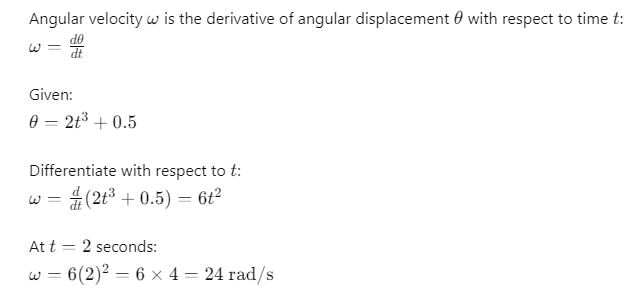Test: Motion in a Plane - 2 - JEE MCQ
20 Questions MCQ Test Chapter-wise Tests for JEE Main & Advanced - Test: Motion in a Plane - 2
A particle is projected with a velocity v, so that its range on a horizontal plane is twice the greatest height attained. If g is acceleration due to gravity, then its range is
A particle is fired with velocity v making an angle q with the horizontal. What is the magnitude of change in velocity when it is at the highest point?
A person can throw a stone to a maximum distance of 100 m. The greatest height to which he can throw the stone is
The ceiling of a hall is 40 m high. For maximum horizontal distance, the angle at which the ball may be thrown with a speed of 56 m/s without hitting the ceiling of the hall is
A bomb is dropped from an aeroplane when it is directly above a target at a height of 1254.4 m. The aeroplane is going horizontally with a speed of 150 m/s. The distance by which it will miss the target is
The range R of projectile is same when its maximum height are h1 and h2. What is the relation between R, h1 and h2?
A projectile is fired from level ground at an angle θ above the horizontal. The elevation angle of the highest point as seen from the launch point is related to θ by the relation
A projectile has a time of flight T and range R. For a given angle of projection if the time of flight is doubled, then what happens to the range?
hree particles A, B and C are projected from the same point with the same initial speeds making angles 30o, 45o and 60o respectively with the horizontal. Which of the following statements is correct?
A particle is projected from the ground with an initial speed of v at an angle q with horizontal. The average velocity of the particle between its point of projection and highest point of trajectory is
With what minimum speed a particle be projected from origin so that it is able to pass through a given point (30 m, 40 m)?
A particle is moving along a circular path. The angular velocity, linear velocity, angular acceleration and centripetal acceleration of the particle at any instant respectively are . Which of the following relations is not correct?
A particle is moving along a circular path with uniform speed. Through what angle does its angular velocity change when it completes half of the circular path?
A wheel is subjected to uniform angular acceleration about its axis. Initially its angular velocity is zero. In the first 2 sec, it rotates through an angle q1; in the next 2 sec it rotates through an additional angle θ2, the ratio θ2/θ1 is
If the equation for the displacement of a particle moving on a circular path is given by θ = 2t3 + 0.5 where θ is in radian and t in second, then the angular velocity of the particle at t = 2 s is
Which of the following statements is false for a particle moving in a circle with a constant angular speed?
Two trains are each 50 m long moving parallel to each other at speeds 10 m/s and 15 m/s respectively, at what time will they pass each other?
Two cars are moving in same direction with speed of 30 kmph. They are separated by a distance of 5 km. What is the speed of a car moving in opposite direction if it meets the two cars at an interval of 4 min?
A man can swim in still water at a speed of 6 kmph and he has to cross the river and reach just opposite point on the other bank. If the river is flowing at a speed of 3 kmph, and the width of the river is 2 km, the time taken to cross the river is (in hours)
|
446 docs|930 tests
|





















